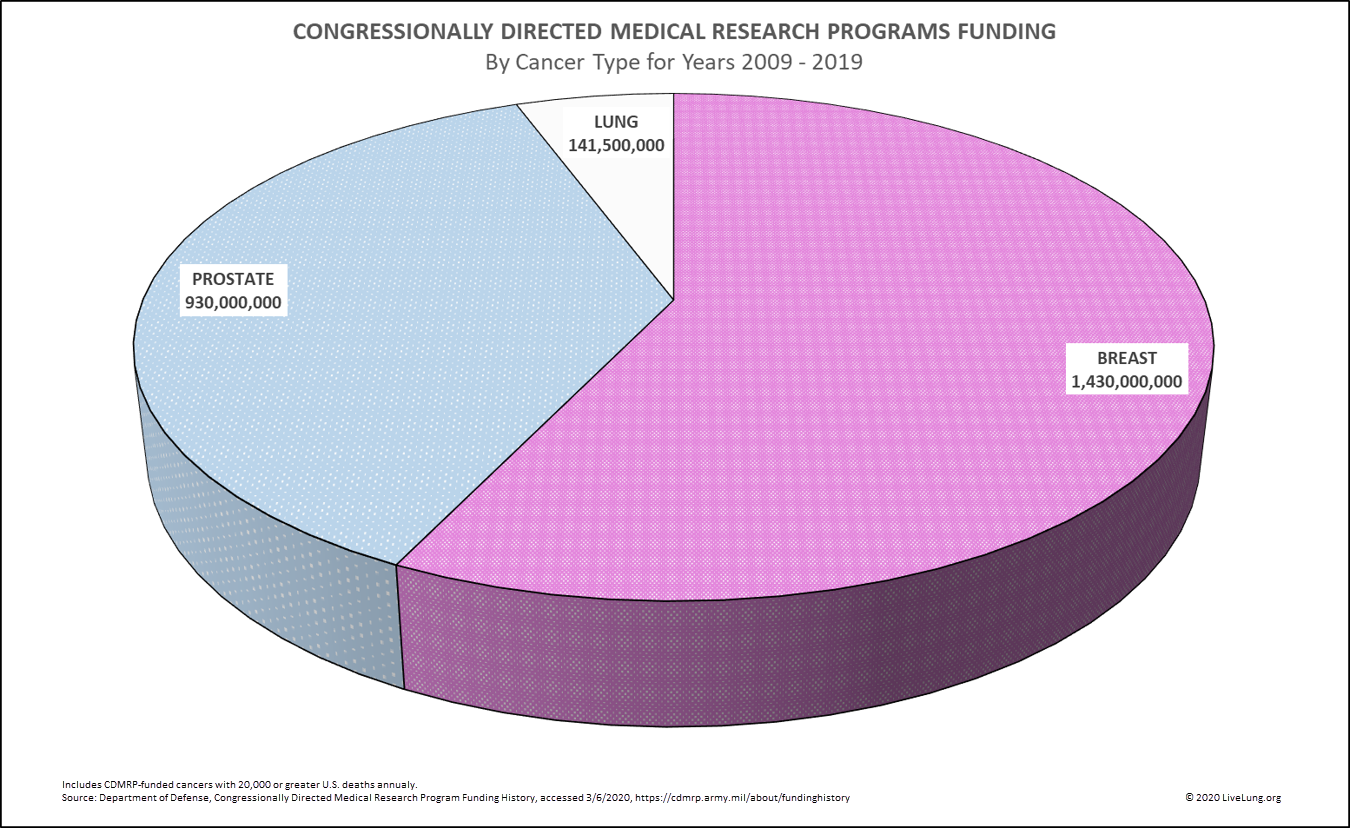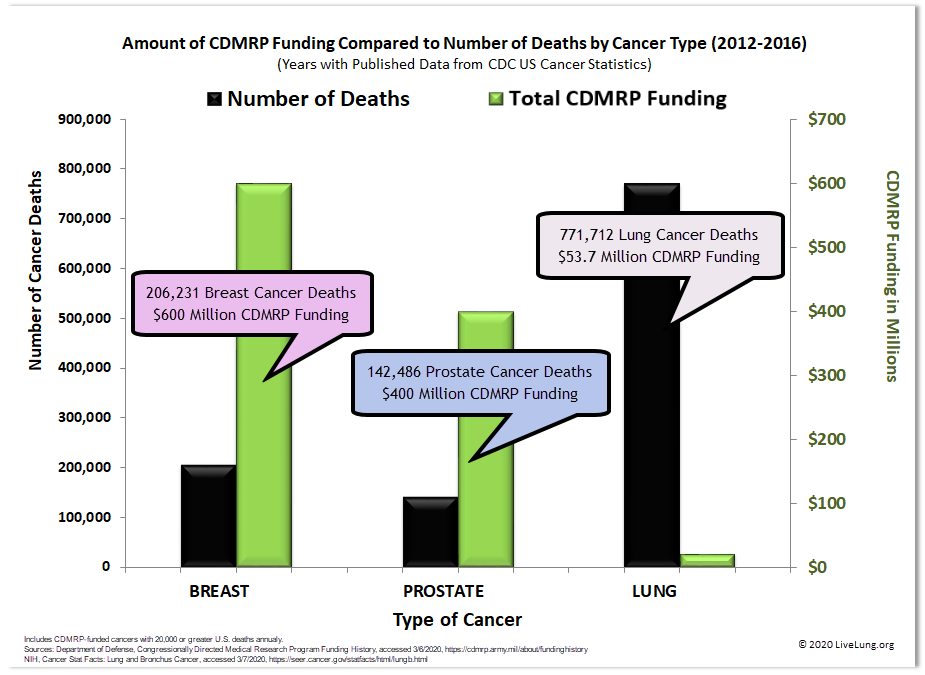Tell Congress to Fund Research Fairly (Part 1)
As a lung cancer survivor, I am tired of feeling abused, unworthy, and ashamed to ask Congress for truly fair funding. I am sick of excuses.
Lung cancer research is drastically underfunded.
Where does lung cancer research funding come from?
Unlike most cancer research funded through the National Institutes of Health, the Lung Cancer Research Program is part of the Congressionally Directed Medical Research Program (CDMRP), funded through the U.S. Department of Defense.
So, Congress appropriates the amount of funding for the Lung Cancer Research Program. In addition to lung cancer, the CDMRP funds breast cancer research, prostate cancer research, and several other worthy research programs. These research programs have resulted in dramatically improved outcomes for cancer patients.
Why do we need increased funding?
Every advocate for every type of cancer (or any disease) wants more funding for their cause. I understand this. But our case is dire. We desperately need a significant increase in funding.
Here’s why. We know the harsh facts about lung cancer, but apparently Congress does not. Lung cancer is the No. 1 cancer killer in America and worldwide. Lung cancer kills nearly twice as many women as breast cancer and three times as many men as prostate cancer. Lung cancer kills more people than breast, colon, and prostate cancers combined. More than 228,000 Americans will be diagnosed with lung cancer and more than 135,000 Americans will die from lung cancer this year.1
We're asking for equitable funding
Here is the kicker, though. Even though lung cancer is the deadliest cancer killer, the Lung Cancer Research Program has been grievously and disproportionately underfunded. Funding for the Lung Cancer Research Program should be equitable to other major cancer research programs funded by CDMRP.
So, what is equitable funding? How does Congress determine the amount of funding for each program? How do we, as advocates for the lung cancer community, determine a fair amount to request?
Let's compare cancer research programs
Let’s start by evaluating similar programs within the same funding mechanism. The first cancer research program developed by CDMRP was the Breast Cancer Research Program which began in 1992 with $25 million. That program had a nearly 10-fold funding increase—from $25 million to $240 million—in FY1993-94.
Then, in 1997, CDMRP funded the Prostate Cancer Research Program at $45 million. Within four years, in 2001, funding for that program had more than doubled—from $45 million to $100 million.

FIGURE 1. Historic disparity of CDMRP funding for Breast, Prostate, and Lung cancer research.
Year after year, these programs were funded, and new programs were added to the CDMRP.
Meanwhile, there was no funding for lung cancer research by the CDMRP. In 2009, the Lung Cancer Research Program was created and funded at $20 million.
Funding cuts for lung cancer research programs
However, rather than increasing that program 10-fold, like what was done for breast cancer or even doubling like prostate, the lung cancer program was slashed. Within a couple of years, the Lung Cancer Research Program was cut in half—from $20 million to $10.2 million.

FIGURE 2. CDMRP funding of Breast, Prostate, and Lung cancer research juxtaposed by cancer deaths.
In fact, that first year was the most money the Lung Cancer Research Program has received since it was created more than a decade ago.
Read the continuation of Dusty's message in Tell Congress to Fund Research Fairly (Part 2). Learn more about the 2020 Virtual Lung Cancer Voices SummitSpeaking Out as One.

Join the conversation